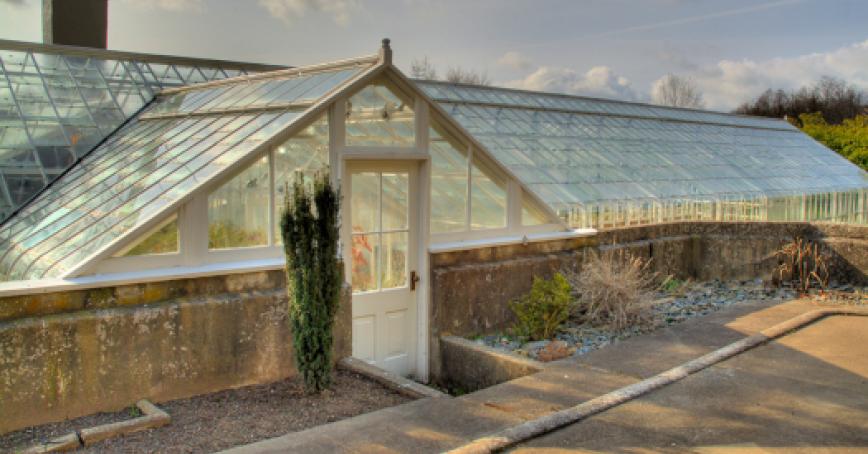Preserving history in Royal Roads’ "Glass House"

On an Edwardian estate, next to a grand castle, amidst a variety of gardens dating back more than a century, a structure has to be something special to be considered “the only” of anything.
But that can be said of the “Glass House” at Royal Roads University in Victoria.
A wood-and-glass greenhouse situated within a four-acre walled food garden, “it’s really the only building [at Royal Roads] that’s still used for its original purpose,” says Jenny Seeman, the university’s archives manager. “Everything else has been adapted for modern-day use but the greenhouse was built as a greenhouse and has been used as a greenhouse for over a hundred years.
“When you walk through the greenhouse, you get a sense of stepping back in time,” Seeman says, noting its windows still have manual cranks and the support pillars, intended as peach trellises, are adorned with past gardeners’ handwritten notes, in pencil.
“There’s something like ‘4 March, 1918,’ it says, ‘Earliest of All,’ which is a type of cabbage,” she says. “It’s all right there in front of you. The history is very tangible.”
The history of the Glass House goes back to the beginning of Hatley Castle and the estate on which it sits. It was built by Lord and Burnham Greenhouses, which is still in operation, for James Dunsmuir, a former BC premier and lieutenant governor, and his wife Laura Dunsmuir.
“There’s something very personal about the buildings at Royal Roads that connects you to the people who were there before,” Seeman says, adding about the glass house: “It’s worth preserving because it’s such a rare example.”
Preserving the Glass House is one of several key projects of A Vision in Bloom, the Royal Roads fundraising campaign launched recently to restore and revitalize the university’s historic gardens and related facilities.
RRU’s director of operations, Ron Granados, says the Glass House, in which the university’s gardeners still propagate and grow plants, was last renovated in 2006 thanks to donations. More recently, the university engaged consultants to come up with two plans for the structure: one, to ensure it remains safe and stable after some glass panes fell from the wood frame; the other, to rebuild it and prolong its life for 15 to 20 years. The former work was done but the latter project carries a potential cost upward of half a million dollars.
While the price tag is large, so is the potential for the greenhouse, Granados says.
“Once we restore the glass greenhouse, we can use it for teaching, we can use it for community outreach, we can use it for food production,” he says, noting A Vision in Bloom includes expansion of the food garden.
The planned full restoration within the next two years would include upgrading the wood framing, replacing failing glass and seals, converting gas boilers to electric, improving accessibility and reimagining opportunities for community engagement. With donor support, a modern glass house — a structure built for a privileged few — will serve as a dynamic hub of teaching, learning and research for a broad audience with a passion for plants and a desire to create a healthier planet.
Join us to restore garden heritage, build food production or celebrate a friend of loved one in your life.